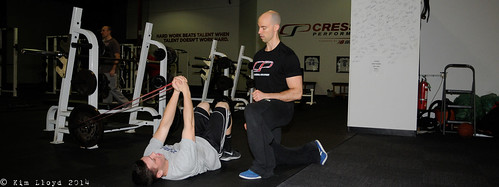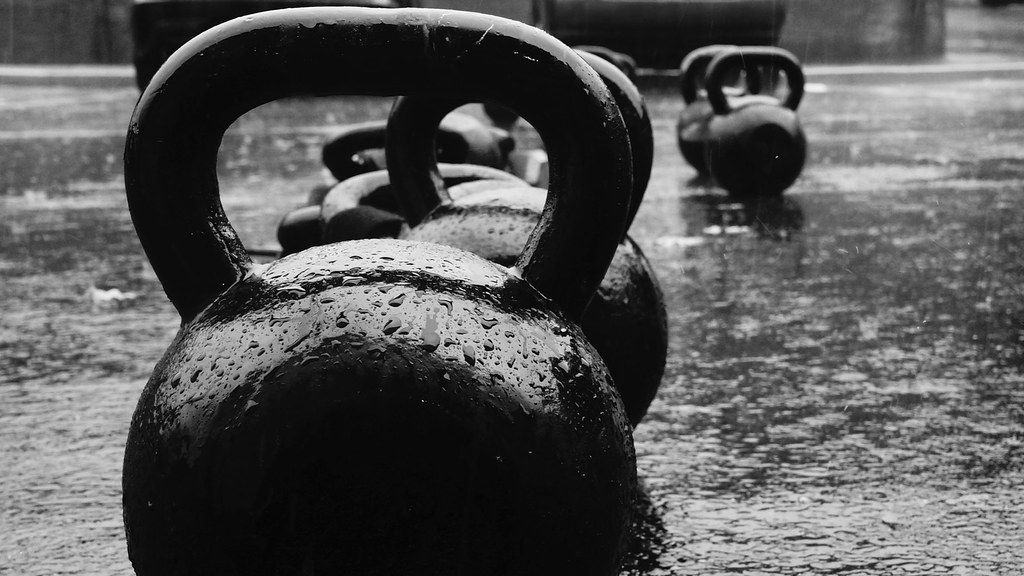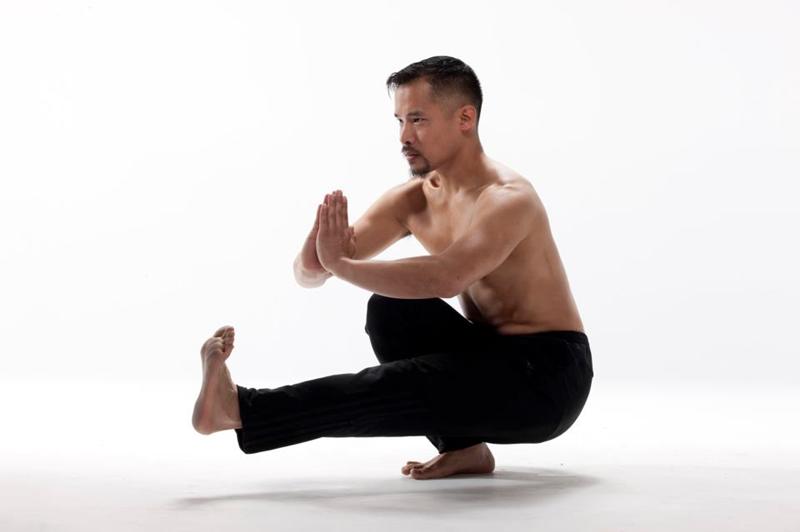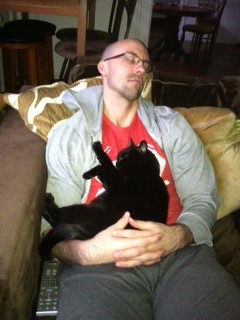When I was a junior in college one of my professors had us read The 7 Habits of Highly Effective People by Stephen Covey.
Yeah, I didn’t read it.
But who actually reads in college anyways? I was too busy playing baseball, lifting weights, watching Party of Five, and not hanging out with girls because, well, I was watching Party of Five.
I mean, all I had to do was look at the title and I knew it was going to put me to sleep within five minutes of turning the cover. And besides, was this book going to add 5MPH to my fastball and get me drafted? Pffffft, I think not!
Fast forward five years.
Surprise! Nothing I read added 5MPH to my fastball. Professional baseball didn’t pan out and I was a year or two into my career as a personal trainer. I finally listened to my professor and read the book. And it was game changer.

I won’t bore you with the details – it’s a quick read – but The 7 Habits of Highly Effective People speaks to things like how to be more proactive, why it’s important to think about the future so that you can more concretely figure out what to make a reality, the value of the “win-win” mentality, seeking to understand shit before you open your mouth (<— that’s my own interpretation), and what it means to “sharpen the saw” (I.e., seek out activities like exercise, yoga, meditation, etc. to expedite mental focus), among a handful of others.
Needless to say it’s a book I recommend to a lot of people, and something who’s theme I’m going to rip off today.
The 7 Habits of Highly Effective Deadlifters
Being a massive human being helps (^^^^^^^^^), so I’ll just skip that one and try to focus on some less obvious points.
NOTE: What follows is more of a commentary on deadlift technique with the goal to lift a lot of weight. It’s not going to cater to CrossFit and more of the tap-n-go, bounce off the floor, (high) hinge deadlift.
NOTE II: Please don’t take this as a knock against CrossFit. It isn’t. I get that the tap-n-go approach is more relevant to the demands of a CrossFit class or competition, where high(er) reps are performed. I also recognize that there are some strong people who do CrossFit.
But if you’re a CrossFitter and you’re that easily butt-hurt over me poo-pooing a tap-n-go deadlift, I’ll ask you this: why is the exercise called a DEADlift?
NOTE III: Nothing I mention below is concrete and will apply to every lifter in every situation. While I feel much of what I have to say with resonate with a lot of people, I’m not that much of an egotistical asshat to think that it will apply to 100% of the lifting population. So take that for what it’s worth.
Anyways……..
1. Your Lats Are the Key (Point #1)
In order to move big weights (safely, and long-term) you need two things to happen: you need to place a premium on tension and alignment.
If either of the above are lacking you’re not going to be able to develop as much force.
To the former point (tension), the lats are kind of a big deal.
The latissismus dorsi (or “lats” in bro-talk) are a massive muscle, which, on top of playing a role in humeral extension, internal rotation, and adduction (blah, blah, blah), also has significant play in breathing patterns and more germane to this conversation spinal stability.
In short: get the lats to engage and garner TENSION during the setup of a deadlift, the more stable you’re going to be, and the less likely you’ll look like this:

To do this I like to use any one of the following cues:
1. Squeeze an orange in your armpits
2. Protect your armpits.
3. Phew…your armpits stink.
4. Put your shoulder blades in your back pocket.
All are fantastic external cues to help people get the lats to fire to provide more tension and thus, stability. Despite this, some people may still look at you as if you’re speaking Elvish when you tell then to “turn on” their lats.
Sometimes it’s beneficial to give them more tactile feedback or cues.
Band Lat Activation with Hip Hinge
Or what I like to call “TRICEPS”
Lat Activation (via Mike Robertson)
2. Your Lats Are the Key (Point #2)
Pigging back on the point above, your lats are what “connects” you to the bar. Yes, your hands are grabbing the bar, but it’s where your armpits (where the lats insert) are located – in relation to bar placement – that plays a huge role in deadlifting badassery.
I’m a fairly decent deadlifter. I’ve pulled 3x bodyweight….570 lbs at a bodyweight of 190. I’m no Andy Bolton, but not many people are.
For years I’ve set up with my shins as close to the bar as possible, and while it led to some success it also led to some pesky back issues.
Why?
When setting up as close as possible to the bar, think about what’s happening.
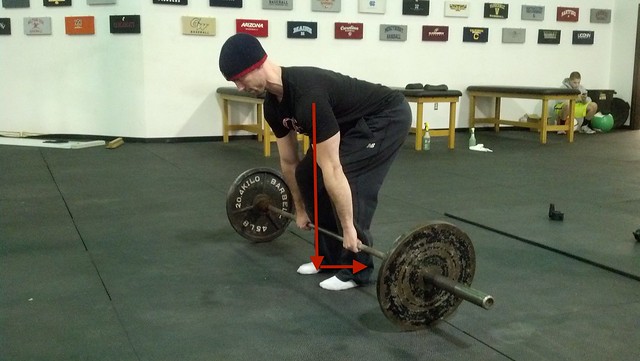
1. My shins are more vertical.
2. And because my shins are more vertical, my armpits are in front of the bar, creating an awkward line of pull I have to overcome.
This not only puts me in a mechanical disadvantage, but over time is going to make my lower back flip me the middle finger. And it has, many times.
In the past few months I’ve had to overhaul my setup so I’m a little further away from the bar in that my shins can translate forward a bit, which then allows me to get my armpits directly over the bar, which in turn puts me in a more mechanical ADvantage (which helps me garner more tension), which in turn makes my lower back happy.
FYI: the picture below doesn’t show that right before I pull, I’ll push my hips back a smidge
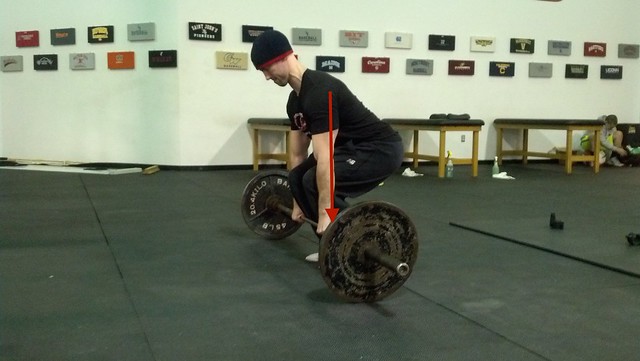
And no, I’m not squatting the deadlift…….;o)
3. Pulling Slack Out of the Bar
Running with the tension theme, another habit of highly effective deadlifters is learning how to take the slack out of the bar.
It’s important to leverage yourself against the weight when you’re setting up. Another way to think about it is to act as if you’re “pulling” yourself (against the bar) into proper position.
This is what it means to get the slack out of the bar or what I like to say instead “bending the bar before you pull it.”
NOTE: I was in the middle of filming a video of this last night when my camera puttered out. Damn you Droid!
Luckily CSP coach, Greg Robins, filmed a video not too long ago on this very concept:
That’s it for today. I’ll be posting part II of this article sometime soon. But in the meantime I want you to recognize the key theme of all the points listed above:
That the setup is very, very, VERY important.
Like almost as important as Bilbo giving Frodo Baggins the blade Sting when leaving Rivendell on his way to Mordor.
95% of the time any mistake or snafu in technique with the deadlift can be attributed to how someone sets up in the first place. Far too often trainees fail to put much thought into it and just haphazardly bend over and pick up the bar. And far too often people end up getting hurt and/or never making any progress.
Place more precedence on getting tension and watch your deadlift take off.

